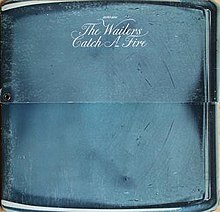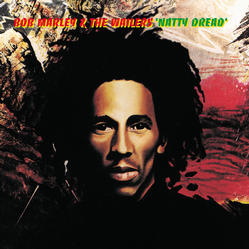
Natty Dread is the seventh album by Bob Marley and the Wailers, released in 1974. Previously Marley had recorded with Peter Tosh and Bunny Wailer as the Wailers, and this was his first record without them.
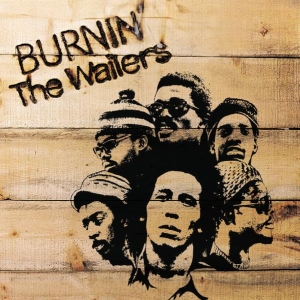
Burnin' is the sixth album by Jamaican reggae group the Wailers, released in October 1973. It was written by all three members and recorded and produced by the Wailers in Jamaica, contemporaneously with tracks from the Catch a Fire album with further recording, mixing and completion while on the Catch a Fire tour in London. It contains the song "I Shot the Sheriff". It was the last album before Marley, Peter Tosh and Bunny Wailer decided to pursue solo careers, while continuing their local releases through their company Tuff Gong Records. A commercial and critical success in the United States, Burnin' was certified Gold and later added to the National Recording Registry, with the Library of Congress deeming it historically and culturally significant.

Bob Marley and the Wailers were a Jamaican ska, rocksteady and reggae band. The founding members, in 1963, were Bob Marley, Peter Tosh, and Bunny Wailer.
Joseph Benjamin Higgs was a reggae musician from Jamaica. In the late 1950s and 1960s he was part of the duo Higgs and Wilson together with Roy Wilson. He was a popular artist in Jamaica for four decades and is also known for his work tutoring younger musicians including Bob Marley and the Wailers and Jimmy Cliff.
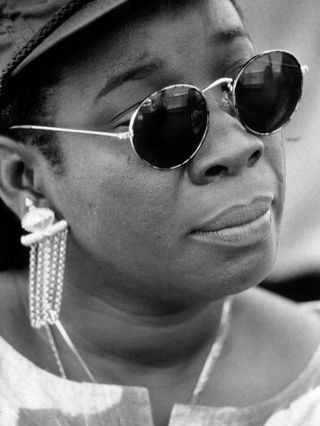
Alfarita Constantia "Rita" Marley is a Cuban-born Jamaican singer-songwriter and entrepreneur. She is the widow of reggae legend Bob Marley. Along with Marcia Griffiths and Judy Mowatt, Marley was a member of the reggae vocal group the I Threes, the backing vocalists for Bob Marley and the Wailers.

The Best of the Wailers is the fourth studio album by the Wailers, released in August 1971. Despite its title, it is not a compilation album. The album was recorded in May 1970 but not released until August 1971.

The Wailing Wailers is the 1965 eponymous debut studio album by the Wailers, later known as Bob Marley and the Wailers. Released on the Studio One label, the album is a compilation of various recordings made between 1964 and 1965 by Neville “Bunny” Livingston, Robert Nesta Marley and Peter McIntosh. It compiles what Clement Coxsone Dodd considered the best Wailers recordings from this period. They were accompanied by the Studio One backing band, The Soul Brothers.

Most of Bob Marley's early music was recorded with Peter Tosh and Bunny Wailer, who together with Marley were the most prominent members of the Wailers. In 1972, the Wailers had their first hit outside Jamaica when Johnny Nash covered their song "Stir It Up", which became a UK hit. The 1973 album Catch a Fire was released worldwide, and sold well. It was followed by Burnin', which included the song "I Shot the Sheriff". Eric Clapton's cover of the song became a hit in 1974.
Albert Valentine "Tony" Chin is a Jamaican guitarist, who has collaborated with many reggae artists including Bob Marley, Dennis Brown, Gregory Isaacs, Freddie McGregor, Bunny Wailer, Big Youth, U-Roy, Max Romeo, Don Carlos, Mikey Dread, Burning Spear, Johnny Clarke and many others.
Kenneth Neville Anthony Garrick was a Jamaican graphic artist and photographer who was based in Los Angeles. He was a graduate of the University of California, Los Angeles (UCLA). He is best known as Bob Marley's art director and is responsible for many of the iconic designs associated with the reggae movement in the 1970s and 1980s.

Earl "Chinna" Smith, a.k.a. Earl Flute and Melchezidek the High Priest, is a Jamaican guitarist active since the late 1960s. He is most well known for his work with the Soul Syndicate band and as guitarist for Bob Marley & the Wailers, among others, and has recorded with many reggae artists, appearing on more than 500 albums.

Blackheart Man is the debut album by Bunny Wailer, originally released on 8 September 1976, in Jamaica on Solomonic Records and internationally on Island Records.
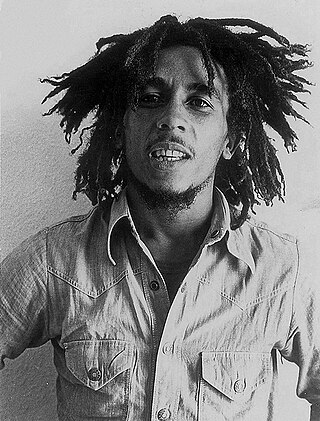
Robert Nesta Marley was a Jamaican reggae singer, guitarist, and songwriter. Considered one of the pioneers of the genre, Marley fused elements of reggae, ska, and rocksteady in his music and was renowned for his distinctive vocal and songwriting style. Marley's contribution to music increased the visibility of Jamaican music worldwide and made him a global figure in popular culture. Over the course of his career, Marley became known as a Rastafarian icon, and he infused his music with a sense of spirituality. He is also considered a global symbol of Jamaican music and culture and identity, and was controversial in his outspoken support for democratic social reforms. He also supported legalisation of cannabis, and advocated for Pan-Africanism. In 1976, Marley survived an assassination attempt in his home, which was believed to be politically motivated.
John Masouri is a journalist, author, reviewer and historian for Jamaican music and several of its musical offshoots including dub, roots and dancehall. He is one of the world's foremost reggae music journalist and has worked extensively over it.
Andrew Tosh is a Jamaican reggae singer and the son of Peter Tosh. He is the nephew of reggae singer Bunny Wailer, also an original member of the Wailers. Andrew has a strong vocal resemblance to his late father and like his father, rides the unicycle.

Donald Kinsey was an American guitarist and singer, best known as a member of the Word Sound and Power Band, the reggae backing group for Peter Tosh.

Neville O'Riley Livingston, known professionally as Bunny Wailer, was a Jamaican singer-songwriter and percussionist. He was an original member of reggae group The Wailers along with Bob Marley and Peter Tosh. A three-time Grammy Award winner, he is considered one of the longtime standard-bearers of reggae music. He was also known as Jah B, Bunny O'Riley, and Bunny Livingston.

Winston Hubert McIntosh, OM, professionally known as Peter Tosh, was a Jamaican reggae musician. Along with Bob Marley and Bunny Wailer, he was one of the core members of the band the Wailers (1963–1976), after which he established himself as a successful solo artist and a promoter of Rastafari. He was murdered in 1987 during a home invasion.
Rudolph "Garth" Dennis was a Jamaican musician who was a founder member of Black Uhuru, later a member of The Wailing Souls for ten years before returning to Black Uhuru in the mid-1980s, and also recorded as a solo artist.
The following outline is provided as an overview of and topical guide to Bob Marley:
